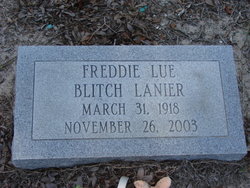
- #ADA READ FILR BACKWARDS HOW TO#
- #ADA READ FILR BACKWARDS CODE#
- #ADA READ FILR BACKWARDS ISO#
- #ADA READ FILR BACKWARDS SERIES#
#ADA READ FILR BACKWARDS SERIES#
WCAG is part of a series of accessibility guidelines, including the Authoring Tool Accessibility Guidelines (ATAG) and the User Agent Accessibility Guidelines (UAAG). Opportunities for contributing to WCAG and other WAI work are introduced in Participating in WAI. We welcome comments and submission of new techniques. WAI updates Techniques for WCAG 2 and Understanding WCAG 2 periodically. The WCAG technical documents are developed by the Accessibility Guidelines Working Group ( AG WG) (formerly the Web Content Accessibility Guidelines Working Group), which is part of the World Wide Web Consortium ( W3C) Web Accessibility Initiative ( WAI).
#ADA READ FILR BACKWARDS ISO#
More information on W3C and the ISO process is in the W3C PAS FAQ. īenefits of WCAG 2.0 as an ISO standard are summarized in ISO in the FAQ. The content of ISO/IEC 40500 is freely available from it is available for purchase from the ISO catalogue. ISO/IEC 40500 is exactly the same as the original WCAG 2.0, which is introduced above along with supporting resources. WCAG 2.0 is approved as an ISO standard: ISO/IEC 40500:2012. TranslationsĪuthorized Translations and unofficial translations of WCAG 2 are listed in WCAG 2 Translations. Please read about these WCAG 2 resources from WCAG 2 Documents.
#ADA READ FILR BACKWARDS HOW TO#

The success criteria are what determine “conformance” to WCAG. The success criteria are at three levels: A, AA, and AAA. The guidelines are organized under 4 principles: perceivable, operable, understandable, and robust.įor each guideline, there are testable success criteria. The WCAG standards have 12-13 guidelines. To meet the needs of others - including policy makers, managers, and researchers - there are many different WAI Resources. Others who want or need a standard for web accessibility, including for mobile accessibility.Web accessibility evaluation tool developers.Web content developers (page authors, site designers, etc.).For links to introductory material, see “Where should I start?” in the FAQ. It is not an introduction to accessibility. WCAG is for those who want a technical standard. W3C encourages you to use the most recent version of WCAG when developing or updating content or accessibility policies. WCAG 2.1 does not deprecate or supersede WCAG 2.0. WCAG 2.0 and WCAG 2.1 are both existing standards. To put it another way: If you want to meet both WCAG 2.0 and WCAG 2.1, you can use the 2.1 resources and you don’t need to bother looking at 2.0. (This is often called “backwards compatible”.) A website that meets WCAG 2.1 or 2.2 should meet the requirements of policies that reference WCAG 2.0. The proposed new success criteria in 2.2 are introduced in What’s New in WCAG 2.2 Draft.Ĭontent that conforms to WCAG 2.1 also conforms to WCAG 2.0.Īnd content that conforms to WCAG 2.2 will also conform to 2.1 and 2.0. They are introduced in What’s New in WCAG 2.1. There are additional success criteria in 2.1 that are not in 2.0. The wording of the 2.0 and 2.1 success criteria will be exactly the same in 2.2.

The 2.0 success criteria are exactly the same (verbatim, word-for-word) in 2.1.Īll requirements in 2.0 and 2.1 will be included in 2.2. More information is in What’s New in WCAG 2.2 Draft.Īll requirements (“success criteria”) from 2.0 are included in 2.1.

WCAG 2.2 Draft is scheduled to be finalized by December 2022. WCAG 2.0 was published on 11 December 2008. The Web Content Accessibility Guidelines (WCAG) standards are stable and referenceable they do not change after they are published.
#ADA READ FILR BACKWARDS CODE#



 0 kommentar(er)
0 kommentar(er)
